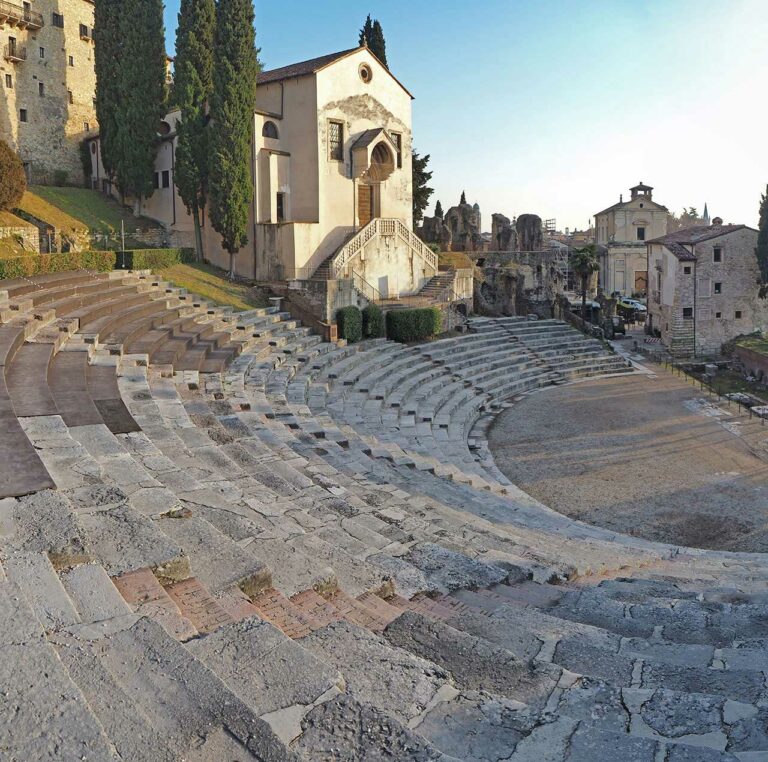
The open-air Roman Theatre from the 1st century BC is one of the oldest and best preserved buildings in Italy. It was built before the Arena of Verona and erected on the natural slope of the hill of San Pietro on the left side of the river Adige, with successive terraces from the river bank to the top of the hill. From the 10th century, after the end of the Roman era, it was completely covered by buildings, houses and churches. The ‘discoverer’ of the theatre was Andrea Monga (1794-1861), a wealthy merchant, who, after purchasing the entire area, carried out extensive demolition and excavation work.
Of the stage building, the supporting walls made of tuff blocks remain; three doors opened towards the stage for the actors to exit; under the stage in the stage pit are the fittings for raising and lowering the curtain. In front of the stage is the semicircular orchestra floor. The steps of the cavea, resting in the middle on the slope of the hill and on the sides on radial support structures, were mostly relocated or rebuilt at the beginning of the 20th century. Restored to the surface at the end of the 19th century, it has hosted music concerts and theatre performances since 1948.
In the suggestive and millenary setting of the Roman Theatre, culture is staged every summer with the Estate Teatrale Veronese festival, which presents a rich programme of drama, music and dance.

